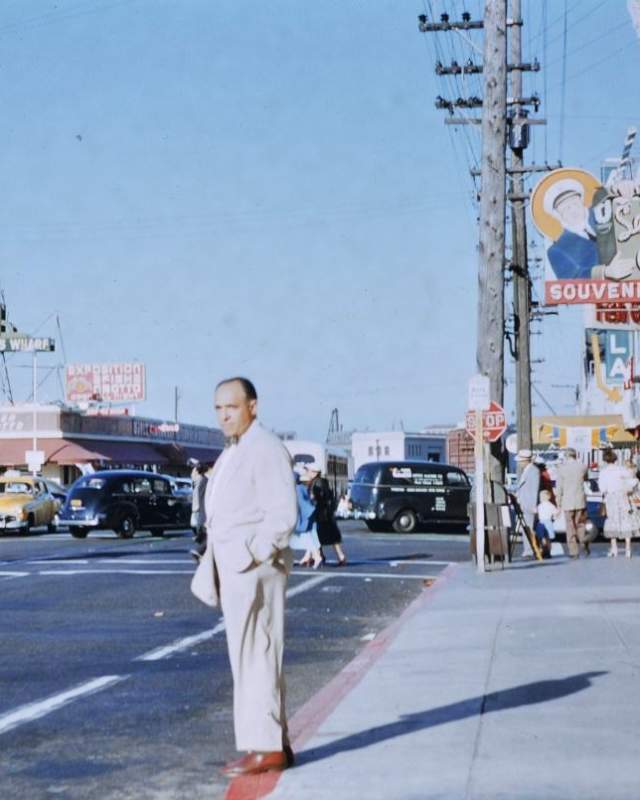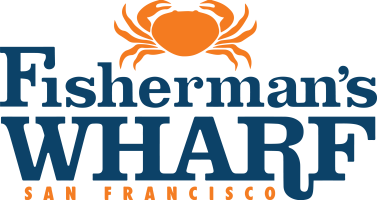-
Pieces of Italian History
Domenico Ghirardelli | Ghirardelli Square
Ghirardelli Square, considered the first successful adaptive reuse project in the…
Hoppe Family | Cioppino's
Many of the Fisherman's Wharf restaurants are named after the family that has…
Marco Fontana | The Cannery
Son of a marble cutter, Marco Fontana was born in Genoa, Italy. After migrating to…
Frank Crivello | The Cannery
After working at crab stands on Fisherman's wharf, and singing to his patrons…
Alessandro Baccari | Fishermen's & Seamen's Memorial Chapel
Baccari patterned his life after the Italian Renaissance, and his resume reflected…
Antonietta Pisanelli Alessandro | 601 Union Street
A woman before her time, a courageous and intelligent businesswoman, an accomplished…
Agostino Giuntoli | Bimbo's 365 Club
Some people come to Bimbo’s 365 Club to relive the good old days of San…
Rena Bocci | 511 Colombus
As Executive Secretary to the Italian Welfare Agency, She dedicated her life to…
Joe Finocchio | Finocchio's
The club's history actually began back in the Roaring '20s, when founder Joe…
Washington Square
Washington Square, or “Il Giardino” as the Italians called it, was…
Amadeo Tommasini | 1640 Stockton
A visionary diplomat who strengthened and brought together the Italian community…
Lawrence Ferlinghetti | City Lights
Along with partner Peter Martin, he founded the City Lights Bookstore in 1953 and…
-
SF Italian History
The Gold Rush Era 1848-1855
1850s The first wave of Italian immigrants arrive for the Gold Rush. By 1850, there were 229 Italians living in San Francisco. Those who came for the Gold Rush quickly moved to buy land or work in service industries, rather than stay in the mines. The standard fishing boat at Fisherman’s Wharf in the late 1800s is a lateen-rigged felucca, modeled after those used for centuries in Italy.
1860-1890s The largest number of Italian immigrants in the United States live in California. As late as 1890, there were more Italians in the Pacific states than in New England. Additionally, Italian stone and marble cutters become in high demand in San Francisco, and Sicilian fishermen begin to move to California in large numbers for the first time. Italians begin to move to the valleys to grow grapes and citrus, and truck gardening becomes a common occupation in San Francisco.
1863 Domenico Ghirardelli produces his first large batch of chocolate. The famous San Francisco chocolatier has dedicated an entire plaza square to the love of chocolate.
1900s The story of Fisherman’s Wharf began in 1900, when the state set aside the waterfront between the foot of Taylor and Leavenworth streets for commercial fishing boats. Sicilian family units begin arriving in California in large numbers. From the beginning, fishermen sold parts of their catch to housewives, directly from their sailing craft, and some of them set up stalls on the piers and developed a regular market.
Then one enterprising fisherman had the idea of selling clam chowder across his counter to hungry patrons. Fisherman Tom Castagnola expanded the practice; he put in some benches and tables and developed the crab cocktail, a small portion of crab meat with a special sauce. Shrimp cocktails also proved to be a popular dish, especially during prohibition, when other kinds of cocktails were slightly more difficult to come by. He tried mixing crab with Thousand Island dressing and developed the “Crab Louie,” which in time became the Wharf’s most popular dish.
Castagnola soon found it more profitable to sell his boat, buy his fish from other fishermen, and devote his full time to the store. Others did the same. The late Mike Geraldi, for example, abandoned a twenty six year fishing career, built a restaurant – Fisherman’s Grotto – took his sons into the business, and served the first complete seafood meals on the Wharf.
Several Wharf families also opened restaurants the Aliotos, the Sabellas, the DiMaggios.
The Early Years 1900-1950's
1906 A major earthquake devastates San Francisco. Built over the rubble of the 1906 Earthquake, Fisherman’s Wharf became a bustling hub by what was once Meiggs Wharf, with Italian fishermen making a living off the Gold Rush population, as well as lumber and food industries. During Dungeness crab season (November to April), fishermen set up street-side crab pots to sell whole crabs and paper cups full of crab meat.
Entire fleets, loaded with fishermen and their big families, would sail on Sunday to some wooded Marin shore for a mass picnic.1910 San Francisco has 16,918 Italian immigrants, mostly from northern Italy. Italian truck farms produce crops worth approximately $19 million dollars.
1922 The Hyde Street Pier is built for car ferries that shuttled passengers back and forth between San Francisco and Marin County. For several years, this ferry route was officially part of Hwy 101 until the Golden Gate Bridge opened in 1937. Today, it's a floating museum that houses several ships.
1939 – 1945 Because Italy was at war with the United States during World War II, all non-citizen Italians were banned from working and living near the coast and were not permitted within 14 blocks of Fisherman's Wharf.
1939 The Bathhouse building was built in 1939 and became the focal point of the Aquatic Park Historic Landmark District. After occupation by troops in WWII from 1941 through 1948, the building became home to the San Francisco Maritime Museum and the country’s first Senior Center. The museum was operated by the San Francisco Maritime Association until it was transferred to the National Park Service in 1978.
1946 The first break in the solid Italian tradition came when two businessmen named Gene McAteer and Bill Sweeney opened a restaurant in 1946 and, self-conscious about their names, labeled it “Tarantino’s”.
The old era of the Wharf is passing. Fathers who once fished the Mediterranean and still speak in the accents of Southern Italy are being succeeded by sons who learned jive talk at Galileo High, served their time in the armed forces, and would rather watch television than play an accordion and sing of old Sorrento.1950 The Wharf is gradually growing less clannish. Many of the boats are still painted blue and white, the colors of the fishermen’s patron saint, La Madonna del Lume, but the only community custom which remains is the annual blessing of the fleet. On the first Sunday of October, a long procession wound down from Sts. Peter and Paul’s Church to the Wharf, where each boat is given the blessing by the priest.
Fishermen like Manilcalco are a vanishing tribe – a rugged breed of men who earn their living by working alone against the elements with little more than some basic equipment and their own skill and muscle. The one-man boats are giving way to larger crafts worked by crews.1960 – 1970 Great efforts were made in the 1960s and '70s to save the working part of Fisherman's Wharf from being completely overrun by ticky-tack tourist shops and hotels, even while the Port of San Francisco sought to facilitate the development of tourism as a way to offset the loss of shipping after the 1960s.
1970 – 2022 Today's Pier 45 state-of-the-art fish processing facilities are partly thanks to funding that followed damages during the 1989 earthquake, but are also thanks to the diligence of Port and City officials who remained committed to saving the historic working fish industry on the northern waterfront. Herring, salmon, crab, and sports fishing are the primary businesses of the remaining fishing fleet, though traditional Italian family names like Alioto (which shut its doors in 2022 after 97 years in business) and Sabella still dominate the area's old restaurants and shops.
Sourced From:
Found SF. FOUNDSF. (n.d.). Retrieved August 29, 2022, from https://www.foundsf.org/
















